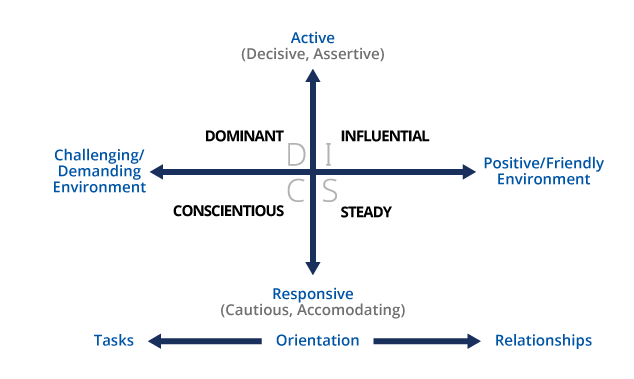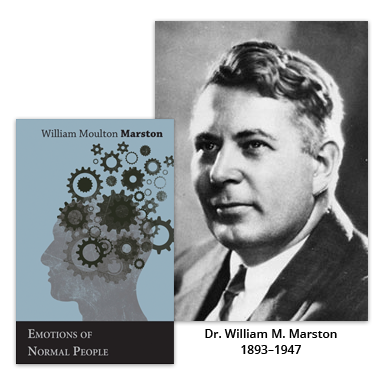About DISC
History, Science, News and More
The Theory of DISC
Of the over seven billion people in the world, all are unique in regards to their personality or temperament. To deal practically with this kind of diversity we tend to group people into categories.
The DISC model uses a number of categories to organize how people tend to respond to their environment. Is someone task driven or people driven? Are they more decisive and assertive, Or do they tend to be more accommodating? Do they view their environment as a challenge to overcome or as a friendly environment?
The answers to these questions to determine where we are on the model, which of the four types best describes us. It is important to understand, there are no right or wrong answers. Understanding ourselves and others will drastically improve our ability to work together. This understanding is a critical building block for a High-Performance Team®.

The History of DISC

Dr. William M. Marston, a Columbia University psychologist in the early 20th century, developed the theory of human behavior on which the Personal DISCernment Inventory™ is based. Through his extensive research, he identified four major behavioral patterns that are present in all people, but to varying degrees.
Over the years, many other researchers have built on this four-dimensional model of personality, making it one of the most popular systems for teaching people about behavioral styles. Our collection of reports is called the DISC Profile System™, and it is based on the following factors:
| Personality Type | General Traits |
|---|---|
| Dominant | The drive to control, to achieve results. The basic intent is to overcome. |
| Influential | The drive to influence, to be expressive, to be heard. The basic intent is to persuade. |
| Steady | The drive to be stable and consistent. The basic intent is to support. |
| Conscientious | The drive to be right, sure and safe. The basic intent is to be correct. |
The Applications of DISC
There are five critical things a valid DISC assessment will enable you to do:
- Identify specific personality strengths
- Identify possible personality weaknesses
- Discover how environmental situations affect behavior
- Build interpersonal skills
- Improve understanding and collaboration
However, there are a few things for which a disc assessment should not be used:
-
Hiring or firing: a DISC assessment will tell you the traits and individual will use to fulfill their role, not whether the individual can fulfill the role.
Leaders and high performance employees come in all shapes and sizes, and in all four disk types. There is not one that is better then any other. They simply go about their tasks differently.
While DISC can be helpful for this purpose in a battery of assessments, we strongly recommend it should not be used in this way as a stand-alone instrument.
